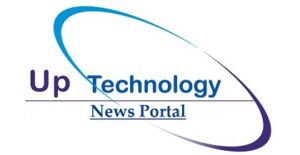RELIANOID Load Balancer is an advanced, high-performance application delivery controller designed for both on-premises and cloud environments. Trusted by enterprises, government agencies, and regulated industries, it optimizes application performance, enforces robust security policies, and ensures continuous availability. As organizations increasingly embrace multi-cloud and hybrid-cloud architectures, securing the entire cloud footprint becomes a strategic priority. This is where Cloud Security Posture Management (CSPM) combined with RELIANOID Load Balancer’s capabilities plays a transformative role.
Understanding Cloud Security Posture Management (CSPM)
Cloud Security Posture Management refers to the continuous process of identifying, evaluating, and remediating risks across cloud infrastructure. CSPM solutions monitor cloud configurations, enforce compliance policies, and detect misconfigurations that could lead to security breaches.
With cloud adoption accelerating, organizations face risks such as:
- Misconfigured storage services exposing sensitive data.
- Over-permissive identity and access management roles.
- Unsecured APIs and interfaces.
- Inconsistent encryption policies across environments.
When integrated into a larger cloud security strategy, CSPM reduces these risks by ensuring all resources align with security best practices and regulatory requirements.
The Role of RELIANOID Load Balancer in Cloud Security Posture
While CSPM tools provide visibility and compliance checks, RELIANOID Load Balancer enhances security posture by controlling traffic flow, enforcing encryption, and integrating with security monitoring systems.
Key contributions include:
1. Unified Traffic Control Across Multi-Cloud
RELIANOID Load Balancer acts as a central point of control, enabling consistent security policies whether workloads run in AWS, Azure, Google Cloud, or private clouds. It eliminates blind spots that CSPM alone cannot address.
2. Encryption and Compliance Enforcement
By enforcing TLS 1.3 and supporting mutual TLS (mTLS), RELIANOID ensures data in transit remains encrypted across hybrid environments—an essential compliance measure for frameworks like GDPR, HIPAA, and ISO/IEC 27001.
3. Micro-Segmentation for Cloud Workloads
RELIANOID enables logical segmentation of services, restricting east-west traffic between workloads and reducing attack surfaces. This complements CSPM findings by enforcing policies at the application delivery layer.
4. Integration with SIEM and Threat Intelligence
CSPM can detect misconfigurations, but RELIANOID adds real-time traffic analytics and integrates with SIEM platforms for threat correlation and response.
Why CSPM and RELIANOID Are Better Together
Combining CSPM with RELIANOID Load Balancer creates a layered security model:
- CSPM identifies cloud infrastructure risks.
- RELIANOID enforces runtime protections and secure connectivity.
- Both provide compliance evidence for audits.
This dual approach addresses both static misconfigurations (found by CSPM) and dynamic threats (mitigated by RELIANOID).
Industry-Specific Benefits
For Financial Institutions
- Meets PCI DSS encryption and access control requirements.
- Ensures consistent security policies across regulated environments.
For Healthcare Providers
- Enforces HIPAA-compliant encryption for sensitive health data.
- Integrates with identity providers for strict authentication.
For Government Agencies
- Supports FIPS-compliant cryptography.
- Enhances resilience against advanced persistent threats (APTs).
Continuous Improvement and Automation
RELIANOID Load Balancer fits naturally into CI/CD pipelines, allowing organizations to automate deployment of secure configurations. This automation reduces the risk of human error, a major cause of misconfigurations identified by CSPM tools.
Planned enhancements for 2025 include:
- Automated compliance mapping of load balancing configurations to major regulatory frameworks.
- AI-driven anomaly detection for identifying suspicious traffic patterns in cloud environments.
- Expanded mTLS coverage for inter-service communications.
Conclusion
In a world where cloud environments evolve by the hour, static security reviews are no longer enough. Cloud Security Posture Management provides continuous oversight, but combining it with RELIANOID Load Balancer ensures that security policies are actively enforced at the network and application delivery layers.
By integrating these two capabilities, organizations gain the visibility, control, and resilience needed to operate securely in multi-cloud environments—whether they are in finance, healthcare, government, or other enterprise sectors.




